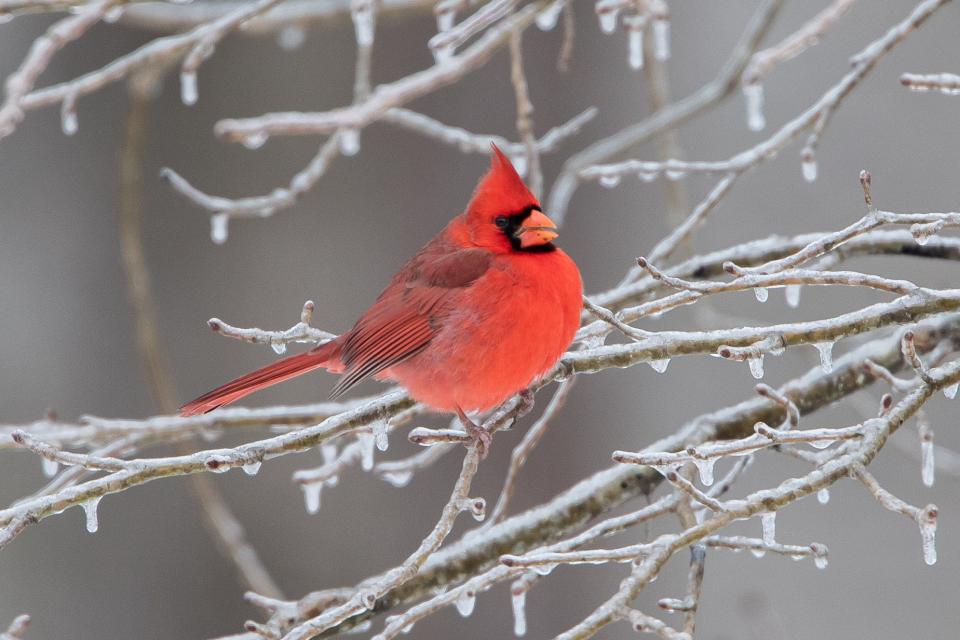A few things to know about the cardinals you see in your yard
“In richness of plumage, elegance of motion, and strength of song, this species surpasses all its kindred in the United States.” These words, written by John James Audubon in his work titled “The Birds of America," describe the Kentucky state bird, the Northern Cardinal.
Seeing as February is National Bird Feeding Month, it only seems appropriate to discuss the many attributes of this favorite song bird and proud part of Kentucky heritage.
The Northern Cardinal (Cardinalis cardinalis), or “Redbird," gets its name from the Latin, cardinalis, meaning “important."
In the Roman Catholic Church, cardinals are important figures who wear red robes and hats, which is one possible name connection. The male Northern Cardinal is nearly all brilliant red except for a black mask which extends to a dark eye and surrounds the chin, throat, and its reddish bill.
The female also has a similar mask only slightly grayer than the males. Her feathers are also a less showy, soft-grayish brown with variable areas of red on the tail, crest and wings, although she does have the same reddish bill as the male.

Juveniles are similar in color to the females, only with a shorter crest and a blackish bill. They will take on the colors of the respective sexes as they mature. The cardinal’s size (8.5 inches), distinctive crest and large, reddish bill help distinguish this songbird from other redbirds like the Summer and Scarlet Tanager who may be found locally during summer.
During the time Audubon was cataloging American’s birds, the Northern Cardinal was primarily a bird of the Southeast. Its range has expanded north since 1886 and by 1958 it had reached extreme southeastern Canada. Its southern range extends south through Mexico. It is limited in its movement westward to the outer reaches of Nebraska and Oklahoma because of lack of rainfall but is abundant in the eastern states.
The Northern Cardinal diet is very diverse. Up to one-third of their summer diet can be insects. During winter, they feed primarily on large seeds, berries and leaf buds. They are commonly found at backyard feeders all year, feeding on black oil sunflower seed, safflower seed, suet, or trays of fruit.
If you would like to learn more about how to attract Northern Cardinals and other birds to your backyard, visit www.backyardbirdcare.org. This site discusses six steps to follow to turn your yard into a sanctuary for birds.
Some trivia about cardinals
The Northern Cardinal is the state bird of several states.
Banding studies show the cardinals can live up to 15 years in the wild.
Until the Migratory Bird Treaty Act of 1918, cardinals were trapped and kept as cage birds for their color and song.
Cardinals are nomadic; the cardinal that visits your backyard feeder may not be the same one from week to week.
Enjoy the winter months by watching for cardinals and other birds in your back yard.
P. Andrew Rideout is the UK Extension Agent for Horticulture and can be reached at pandrewrideout@uky.edu.
This article originally appeared on Evansville Courier & Press: Rideout: A few things to know about the cardinals you see in your yard

